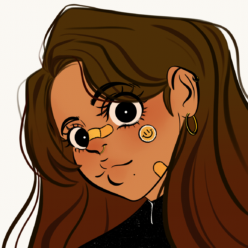
2)The AIGA Design and Business Ethics Handbook sheds light on the ethical considerations that designers should take into account in their professional and personal practices. One key takeaway from the reading is the importance of considering the impact that our design decisions can have on society. The work that graphic designers do is rooted in persuasion, and if we are not careful or considerate we can do some serious harm.
As a graphic designer, I know that my responsibility is not only to create aesthetically pleasing designs but also, to weigh the ethical implications. Although I’d like to think ethics are at the forefront of my mind, I know no individual is perfect and an active effort has to be made. The AIGA Design and Business Ethics Handbook is a reminder to be more conscious of my design choices and to strive to be a more ethical and socially responsible designer.
2a)In the past, There have been times when I’ve used another artist’s creative work, such as images or illustrations, in my design projects. When doing so, I tend to look for royalty-free images and always make sure to give proper credit to the original artist. This generally involves including a transparent attribution, either directly on the design or in the accompanying documentation, specifying the owner’s name, licensing, and, if possible, a link to their portfolio or website. If there is little to no information to properly source an image, I opt to not use it at all, rather than run the risk of discrediting someone.
2b)When does Fair use stop being fair? The Shepard Fairey copyright case highlights the fine line between artistic expression and intellectual property rights. There’s no denying the impact of Fairey’s “Hope” poster during the 2008 presidential campaign, However, as powerful or as pure intentioned as it may have been, it doesn’t change the fact that artists have a responsibility to respect the rights of original creators.
Fair use should be used to aid in creativity and innovation, but artists need to walk that balance between actual inspiration and infringement. In this case, Fairey’s use of the AP photograph without permission neglected that balance. As transformative as the piece may have been, the art was a one-to-one replica of the photo and the tampering of evidence shows a clear lack of ethical understanding.
As an artist myself, I understand the need for reference and the constant need to seek inspiration from existing works. However, it’s crucial to do so in a way that respects the original creator’s rights and seeks permission when necessary. This case serves as a reminder of the both the importance of ethical considerations and transparency in the creative process.



